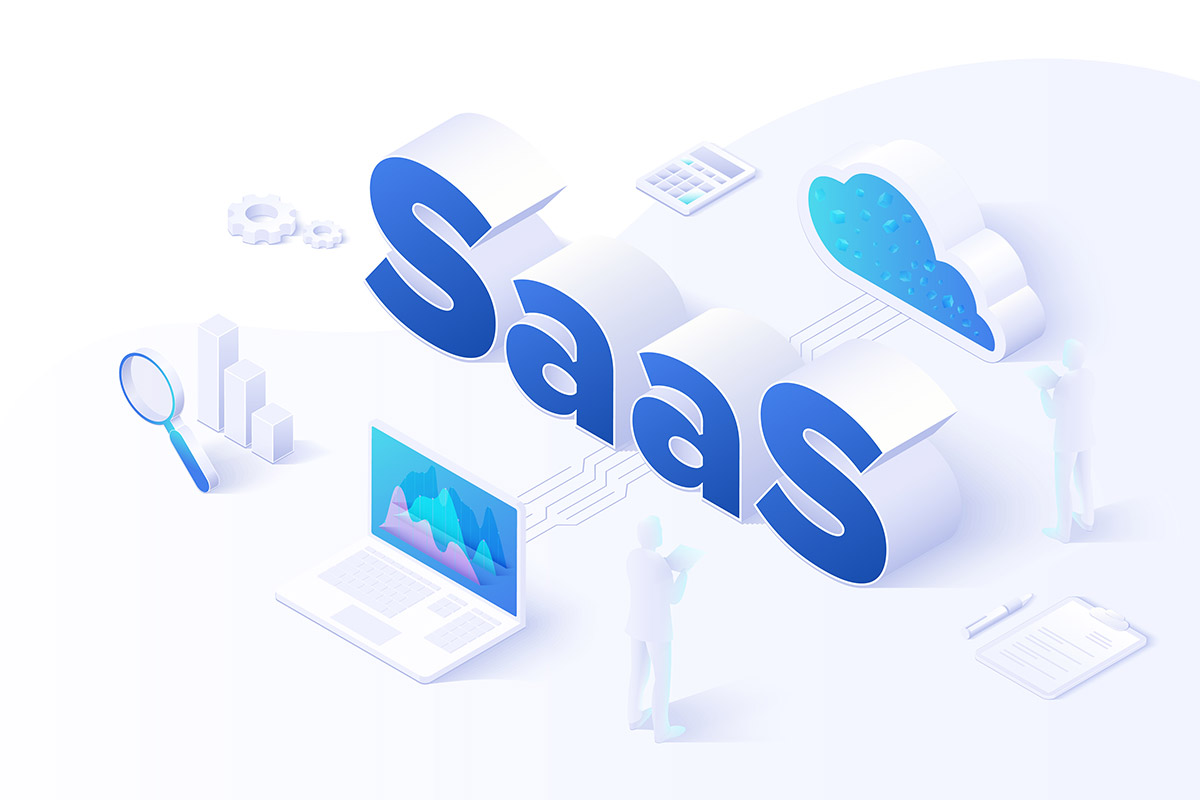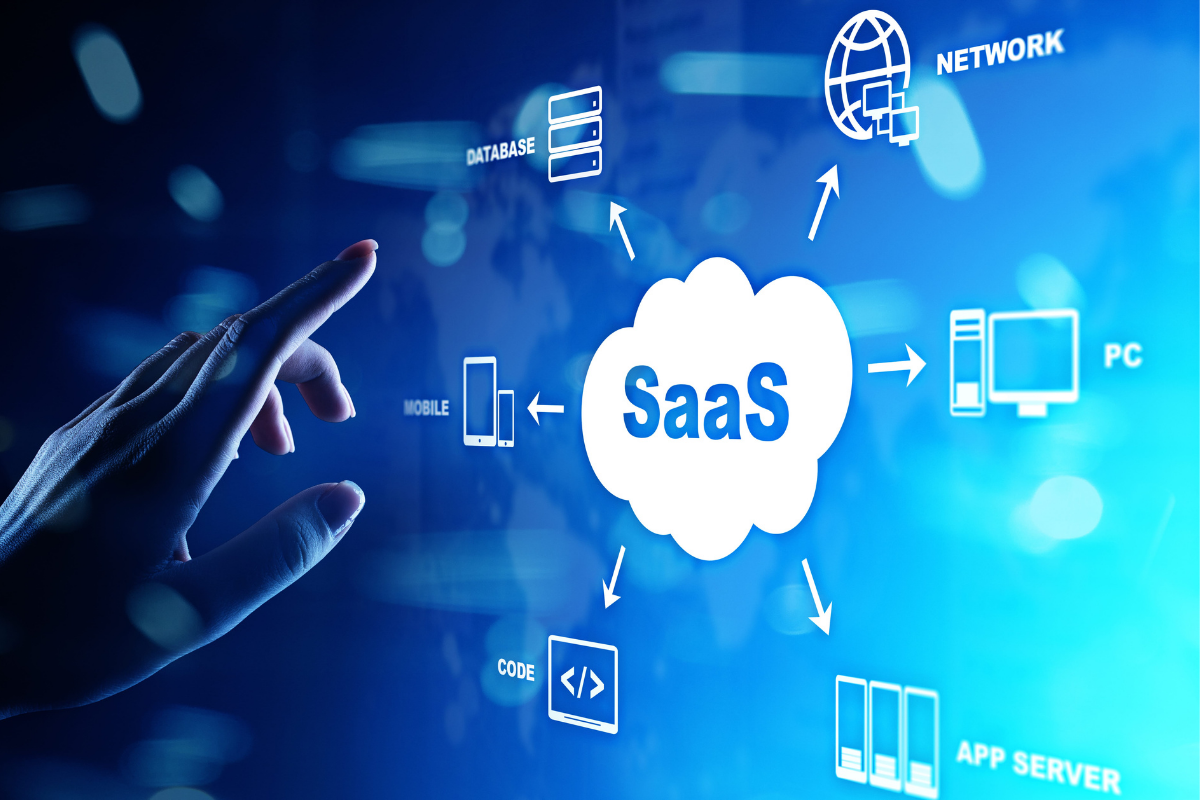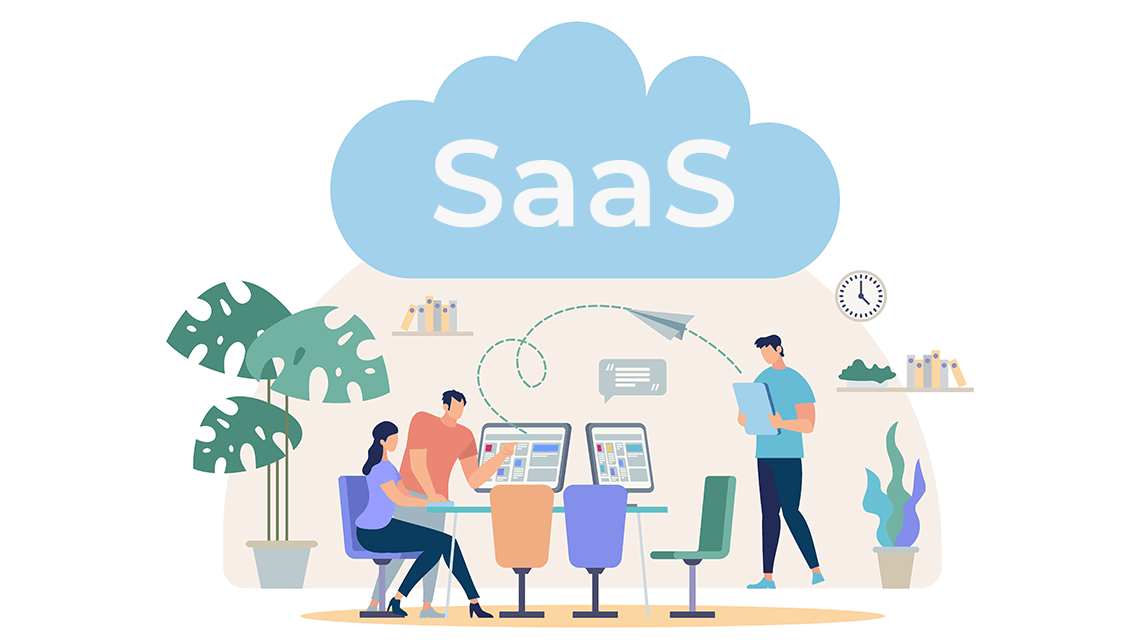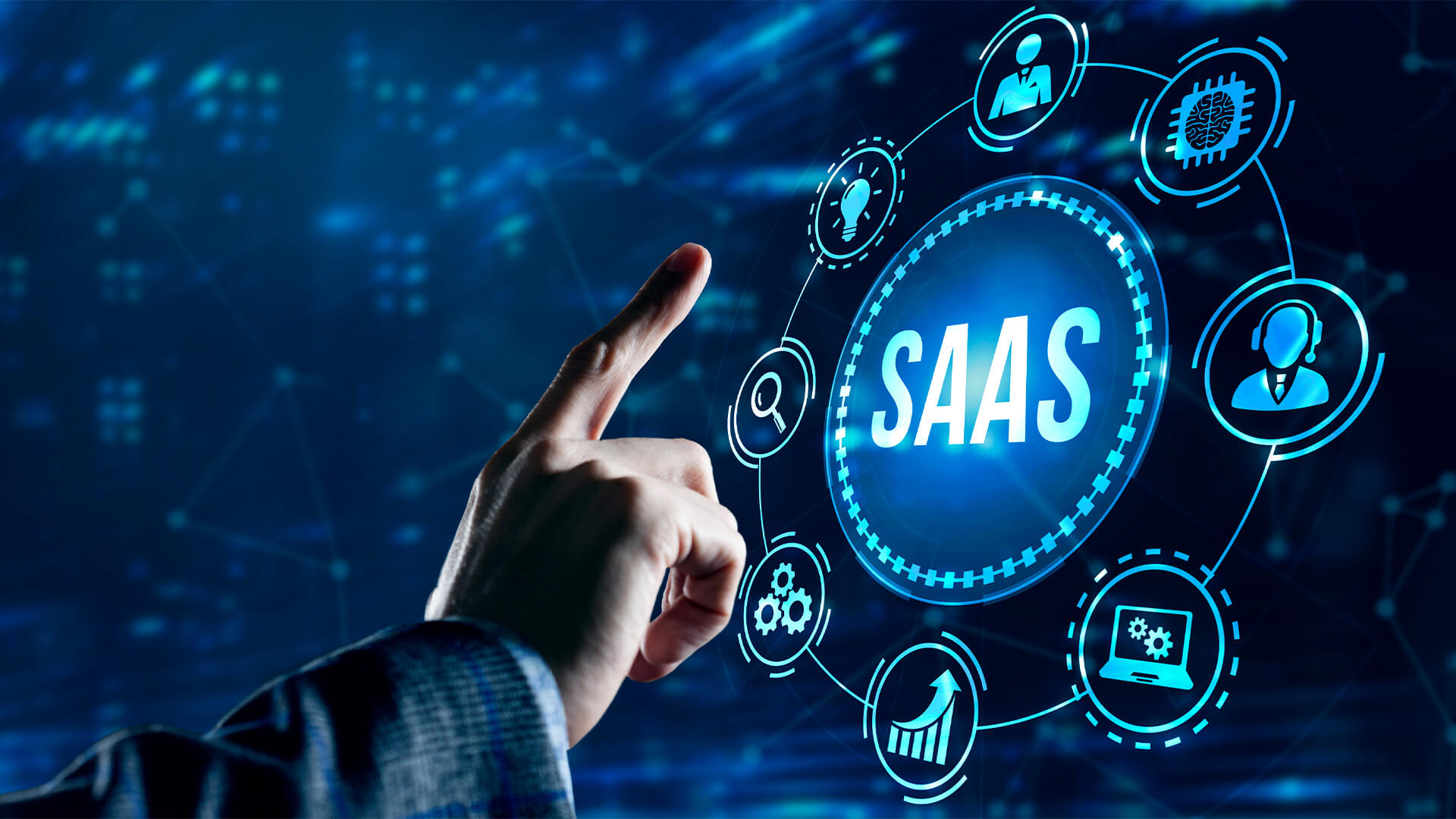What is SaaS Model? Exploring the Advancements and Impact on Businesses
The world of technology is constantly evolving, and with it, various business models have emerged to cater to the needs of modern businesses. One such model that has gained immense popularity in recent years is the Software as a Service (SaaS) model. As the name suggests, SaaS is a software distribution model where applications are hosted on a remote server and made accessible to customers over the internet. This model eliminates the need for businesses to install and manage software on their own servers, providing them with a cost-effective and efficient solution.
SaaS has revolutionized the software industry, allowing businesses of all sizes to access cutting-edge technology without hefty investments in hardware or IT infrastructure. This article will delve deeper into the SaaS model, exploring its benefits, challenges, and impact on businesses worldwide.
Understanding the SaaS Model
Definition and Evolution of SaaS
SaaS is a model where software applications are licensed on a subscription basis and centrally hosted by a service provider, eliminating the need for businesses to install and manage the software on their own servers. The term “Software as a Service” was first coined in 2001 by the Software and Information Industry Association (SIIA), but the concept has been around since the emergence of cloud computing in the late 1990s.

SaaS is a model in which software applications are licensed through subscriptions and hosted centrally by a service provider
The traditional software delivery model involved purchasing a license for the software and installing it on the company’s servers or personal computers. This model required significant upfront investments in hardware, IT infrastructure, and ongoing maintenance costs. With the emergence of cloud computing, businesses could now access software over the internet without the need for installation or maintenance, making it a more cost-effective solution.
Differences between Traditional Software and SaaS
The fundamental difference between traditional software and SaaS is the mode of delivery. In the traditional model, businesses purchase a one-time license for the software and install it on their servers. On the other hand, SaaS operates on a subscription-based model, where businesses pay a recurring fee to access the software over the internet. Other notable differences include:
- Ownership: With traditional software, the business owns the license and can use it indefinitely, while with SaaS, the business has a license to access the software for a specific period.
- Updates and Maintenance: In the traditional model, businesses are responsible for updates and maintenance, while with SaaS, the service provider takes care of these tasks automatically.
- Costs: Traditional software requires significant upfront costs for licenses, hardware, and IT infrastructure, while SaaS models are more affordable, usually based on a monthly or annual subscription fee.
Types of SaaS Models
There are three main types of SaaS models: single-tenant, multi-tenant, and hybrid.
- Single-Tenant SaaS: In this model, each customer has their own instance of the software, hosted on a dedicated server. This model offers high levels of customization and security, but at a higher cost. It is suitable for businesses with complex or sensitive data that require unique solutions.
- Multi-Tenant SaaS: In this model, multiple customers share the same instance of the software, hosted on a single server. This model is more cost-effective as resources are shared among users, but it may lack customization options. It is best suited for businesses with standard requirements and smaller budgets.
- Hybrid SaaS: This model combines the benefits of both single and multi-tenant SaaS, offering customizable solutions while sharing resources among customers. Hybrid SaaS is gaining popularity, especially for larger organizations with diverse needs.
Advantages of SaaS for Businesses
Cost-Effective Solution
One of the key advantages of SaaS is its affordability. With traditional software, businesses have to make significant investments in licenses, hardware, and infrastructure, which can be a barrier for small and medium-sized enterprises (SMEs). On the other hand, SaaS operates on a subscription-based model, where businesses pay a monthly or annual fee, making it more affordable and predictable.

Traditional software requires substantial investments in licenses, hardware, and infrastructure, posing challenges for small and medium-sized enterprises (SMEs)
Moreover, businesses no longer have to worry about maintenance costs, as the service provider takes care of updates, security patches, and technical support. This reduces the overall IT costs for businesses, allowing them to allocate resources to other areas of their operations.
Scalability and Flexibility
SaaS offers businesses the flexibility to scale up or down their software usage based on their needs. In traditional software, businesses had to purchase licenses based on predicted usage and were limited by the capacity of their servers. With SaaS, businesses can easily add or remove users, increase storage space, or upgrade to a higher tier as their needs change.
For growing businesses, this is a significant advantage as they can focus on expanding their operations without worrying about infrastructure limitations. Similarly, established companies can quickly adapt to changing market conditions and scale their software usage accordingly.
Accessibility and Easy Integration
Another significant benefit of SaaS is that it is accessible from anywhere with an internet connection, making it perfect for remote teams and global businesses. This accessibility also allows for easy collaboration and real-time updates, improving efficiency and productivity.
Moreover, SaaS solutions are designed to integrate seamlessly with other applications, reducing the need for manual data entry and streamlining various business processes. This integration aspect is particularly beneficial for businesses looking to automate their operations and enhance their workflows.
Automatic Updates and Maintenance
With traditional software, businesses had to manually install updates and perform regular maintenance tasks, which could be time-consuming and expensive. On the other hand, SaaS service providers take care of these tasks automatically, ensuring that businesses are always using the latest versions of the software. This not only saves time but also ensures that businesses have access to the most up-to-date features and security patches.
Reduced IT Burden
In traditional software, businesses had to have a dedicated IT team to manage installations, updates, and maintenance. With SaaS, businesses no longer require such resources, as the service provider takes care of these tasks. This reduces the burden on the IT department, allowing them to focus on more critical tasks and projects.
Challenges of Adopting SaaS
Data Security Concerns
One of the biggest concerns of businesses when it comes to SaaS adoption is data security. As sensitive data is stored and accessed over the internet, there is a risk of data breaches, cyber attacks, and unauthorized access. This concern is amplified for businesses in highly regulated industries, such as healthcare and finance, where data privacy is crucial.

Data security remains a primary concern for businesses considering the adoption of SaaS
To address this concern, SaaS service providers have to adhere to strict security measures and protocols to ensure the safety of their customers’ data. Businesses must thoroughly research and vet potential service providers before making a selection to ensure that they offer robust security measures and compliance with industry standards.
Vendor Reliability and Dependency
SaaS relies heavily on the performance and reliability of the service provider. In case of any technical issues or downtime, businesses are entirely dependent on the service provider to resolve the problem promptly. This dependency can be a cause for concern, especially for businesses that require 24/7 access to their software.
To mitigate this risk, businesses should conduct due diligence on the service provider’s reputation, reliability, and track record before committing to a long-term partnership. It is also advisable to have a backup plan in case of any unexpected disruptions in service.
Customization Limitations
As SaaS solutions cater to multiple customers, customization options may be limited compared to traditional software. This may not be an issue for businesses with standard requirements, but those with more complex needs may find it challenging to get a fully customized solution.
Service providers may offer some level of customization, but businesses have to carefully evaluate their requirements and determine if the available options meet their needs. If not, it may be more feasible to opt for traditional software or consider a hybrid SaaS model.
Internet Dependence
Since SaaS operates over the internet, businesses need to have a reliable internet connection to access their software. Any disruption in internet connectivity can significantly impact operations, leading to downtime and loss of productivity. This dependence also raises concerns about data accessibility in areas with poor internet infrastructure.
It is essential for businesses to weigh the pros and cons of adopting a cloud-based solution based on their location and internet capabilities. In some cases, it may be more feasible to opt for traditional software if the business’s operations are heavily reliant on internet connectivity.
Hidden Costs
While SaaS is generally more cost-effective compared to traditional software, there may be hidden costs that businesses need to consider before making a decision. Some service providers may charge extra for additional features or user licenses, which can add up over time.
Moreover, businesses need to be aware of any potential price increases or changes in subscription plans that may affect their budget in the long run. It is crucial to thoroughly review the terms and conditions of the service provider to avoid any unexpected costs down the line.
Impact of SaaS on Businesses
Small and Medium-Sized Enterprises (SMEs)
SMEs are often limited by budget constraints and lack of resources, making it challenging to invest in traditional software solutions. SaaS has been a game-changer for these businesses, providing them with an affordable and scalable option to access advanced technology. It has allowed them to compete with larger corporations without having to make significant investments in IT infrastructure.
Additionally, SMEs can now access a wide range of business applications that were previously inaccessible to them due to high costs. This has enabled them to automate processes, improve efficiency, and enhance competitiveness in the market.
Large Corporations
Large corporations have also benefited from adopting SaaS, particularly in areas such as customer relationship management (CRM) and enterprise resource planning (ERP). These businesses have complex requirements and high volumes of data, which can be challenging to manage with traditional software. SaaS offers them a more flexible and scalable solution to meet their needs.
Moreover, as large corporations expand globally, SaaS has provided an avenue for seamless collaboration and integration among different departments and teams across the world. This accessibility and real-time updates have significantly improved communication and productivity within these organizations.
Startups and Entrepreneurs
The SaaS model has been a boon for startups and entrepreneurs looking to launch their businesses with limited resources. With SaaS, they can access a wide range of tools and applications to help them get their business off the ground without having to make significant investments upfront. This has drastically reduced the barriers to entry for startups and has allowed entrepreneurs to focus on developing their products or services rather than worrying about IT infrastructure.
Global Business Landscape
The rise of SaaS has also had a significant impact on the global business landscape. With cloud-based solutions, businesses can operate from anywhere in the world, eliminating geographical limitations. This has opened up opportunities for international expansion and partnerships, leading to a more interconnected and competitive market.
Moreover, SaaS has also played a role in promoting sustainability, as it reduces the need for hardware and physical servers, contributing to a greener environment.
Future of SaaS
The future of SaaS looks promising, with more and more businesses adopting cloud-based solutions every day. According to a report by Statista, the global SaaS market is expected to reach over $157 billion by 2022, showing a steady growth trend. As technology advances, we can expect to see more innovative and specialized SaaS solutions catering to specific industries and niches.
Implementing SaaS in Your Business
Now that we have explored the benefits, challenges, and impact of the SaaS model, let’s take a look at the steps involved in implementing it in your business.
Identifying Suitable SaaS Solutions
The first step in implementing SaaS model in your business is to identify your requirements and determine which software solutions will best meet those needs. Conduct thorough research, read reviews, and consult with industry experts to help you find the right solution for your business.
It is crucial to consider factors such as scalability, flexibility, customization options, data security, and integration capabilities when evaluating potential service providers.
Planning and Preparation
Once you have identified the suitable SaaS model for your business, it is crucial to have a thorough plan in place before implementing them. This involves determining the timeline for migration, assessing any potential risks and challenges, and preparing your team for the change.
It is also essential to communicate with your employees about the upcoming changes, address any concerns they may have, and provide them with sufficient training to ensure a smooth transition.
Migration Strategies
There are various migration strategies that businesses can employ when transitioning to SaaS model. These include:
- Big Bang Approach: In this approach, businesses migrate all their data and processes at once. It requires significant planning and preparation, but if done correctly, it can minimize disruption and downtime.
- Phased Approach: With this approach, businesses migrate their data and processes in stages, starting with the most critical elements first and gradually moving on to the less critical ones. This allows for more control and flexibility in the migration process.
- Parallel Approach: In this approach, businesses continue using their traditional software while simultaneously testing and implementing the new SaaS solution. Once everything is working smoothly, they switch over entirely to SaaS .
The migration strategy chosen will depend on the business’s requirements, available resources, and the complexity of the software being implemented.
Training and Support
As with any new technology, it is crucial to provide your team with adequate training to ensure a successful implementation. SaaS solutions are generally user-friendly, but it is still essential to familiarize your team with the new software, its features, and how to use it effectively.
Additionally, it is crucial to have technical support from the service provider during the implementation phase and beyond to address any issues or concerns that may arise.
Measuring Success and ROI
Once the implementation is complete, it is essential to measure the success of the project and determine the return on investment (ROI). Businesses can track key performance indicators (KPIs) such as cost savings, productivity improvements, and customer satisfaction to measure the impact of SaaS on their operations. This feedback will also help in making any necessary adjustments or improvements to the implemented solution.
Conclusion
In conclusion, the SaaS model has revolutionized the way businesses access and use software, providing a more affordable and efficient solution. Its impact on businesses globally cannot be understated, from enabling SMEs to compete with larger corporations to promoting collaboration and sustainability in the business landscape.
However, like any technology, SaaS comes with its own set of challenges that businesses need to consider before adopting it. It is crucial for businesses to carefully evaluate their needs, plan and prepare for the transition, and select a reliable and suitable service provider for a successful implementation.
As technology continues to advance, we can expect to see more innovative SaaS solutions catered to specific industries and niches, driving further growth and adoption in the coming years.












Post Comment